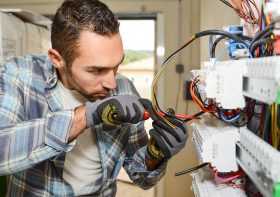Australian queer men and women before gay liberation

Australia’s queer community has a rich history that often remains obscured, hidden beneath the surface of mainstream narratives. Before the advent of the gay liberation movement, which gained momentum in the late 20th century, queer individuals in Australia navigated a complex landscape of secrecy, discrimination, and resilience.
In the pre-liberation era, the societal attitude towards homosexuality was largely hostile, reflecting the prevailing norms of the time. Homosexuality was criminalized in many Australian states, and societal expectations pressured individuals to conform to heterosexual norms. Despite these challenges, queer men and women found ways to connect, communicate, and create their own communities.
One key aspect of queer life before gay liberation was the existence of hidden social spaces. Bars and clubs often became sanctuaries where individuals could express their true selves away from the prying eyes of a judgmental society. However, these spaces were not always safe, as police raids and arrests were common. The risk of exposure and legal repercussions added an extra layer of complexity to the lives of those who sought solace and connection in these clandestine spaces.
Communication and connection were also fostered through secret networks and codes. In an era where open expression of queer identity could lead to persecution, individuals developed subtle ways of signaling their orientation to one another. These covert signals, often conveyed through clothing, mannerisms, or coded language, allowed a sense of community to emerge despite the prevailing societal repression.
The struggle for visibility and acceptance was compounded by medical and psychiatric perspectives that pathologized homosexuality. Practices such as aversion therapy and electroconvulsive therapy were employed in attempts to “cure” individuals of their same-sex attractions. These damaging treatments reflected a broader societal rejection of queer identities, reinforcing the notion that being gay was a deviation from the norm.
Despite these challenges, Australian queer individuals exhibited remarkable resilience. They formed tight-knit communities, offering each other support in the face of societal adversity. Art, literature, and activism became powerful tools for expressing identity and advocating for change. Notable figures emerged who challenged the status quo, laying the groundwork for the later strides made by the gay liberation movement.
The post-liberation era, which gained momentum in the 1970s, marked a turning point in Australia’s queer history. Activism, legal reforms, and shifting societal attitudes gradually dismantled the oppressive structures that had long confined the queer community. However, the struggles and triumphs of queer men and women before gay liberation remain an integral part of Australia’s diverse and evolving narrative. Recognizing and understanding this hidden history is crucial in appreciating the resilience and strength that paved the way for greater acceptance and equality in the years that followed.




Leave a Reply